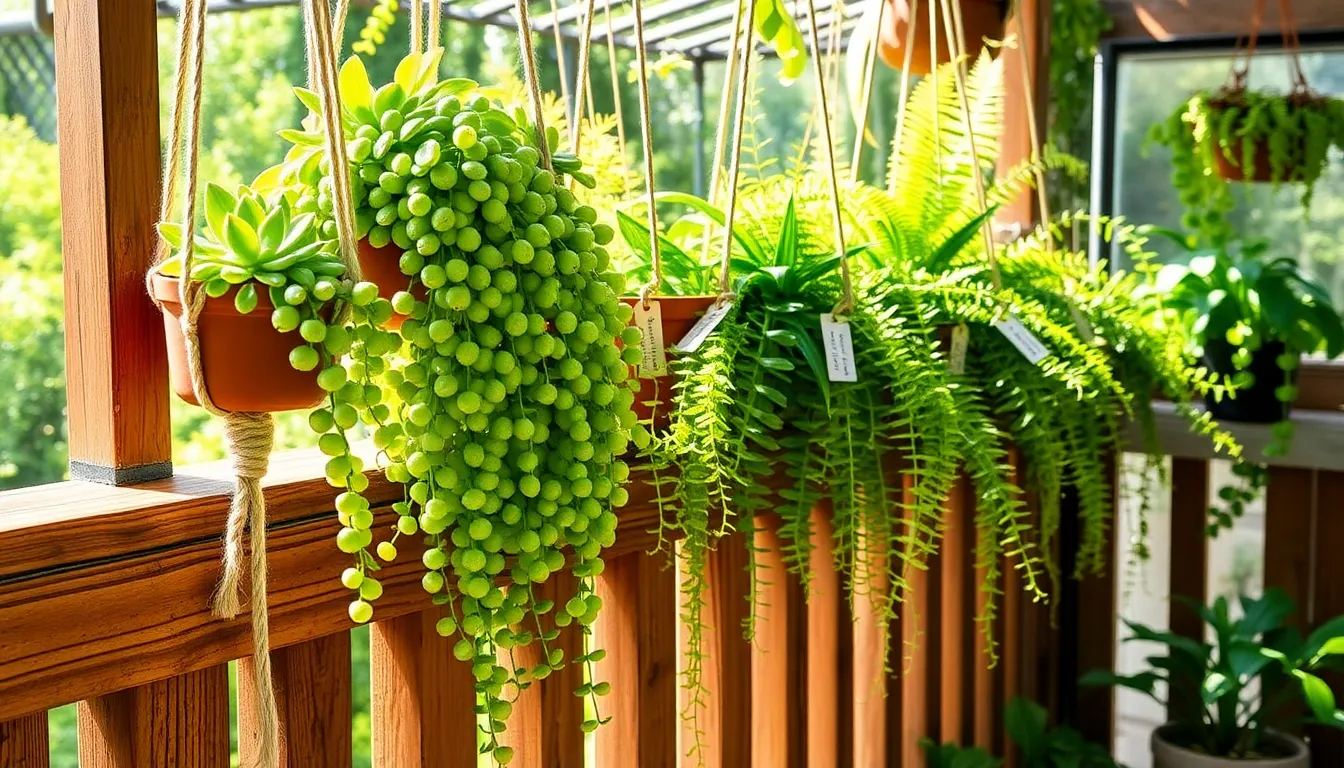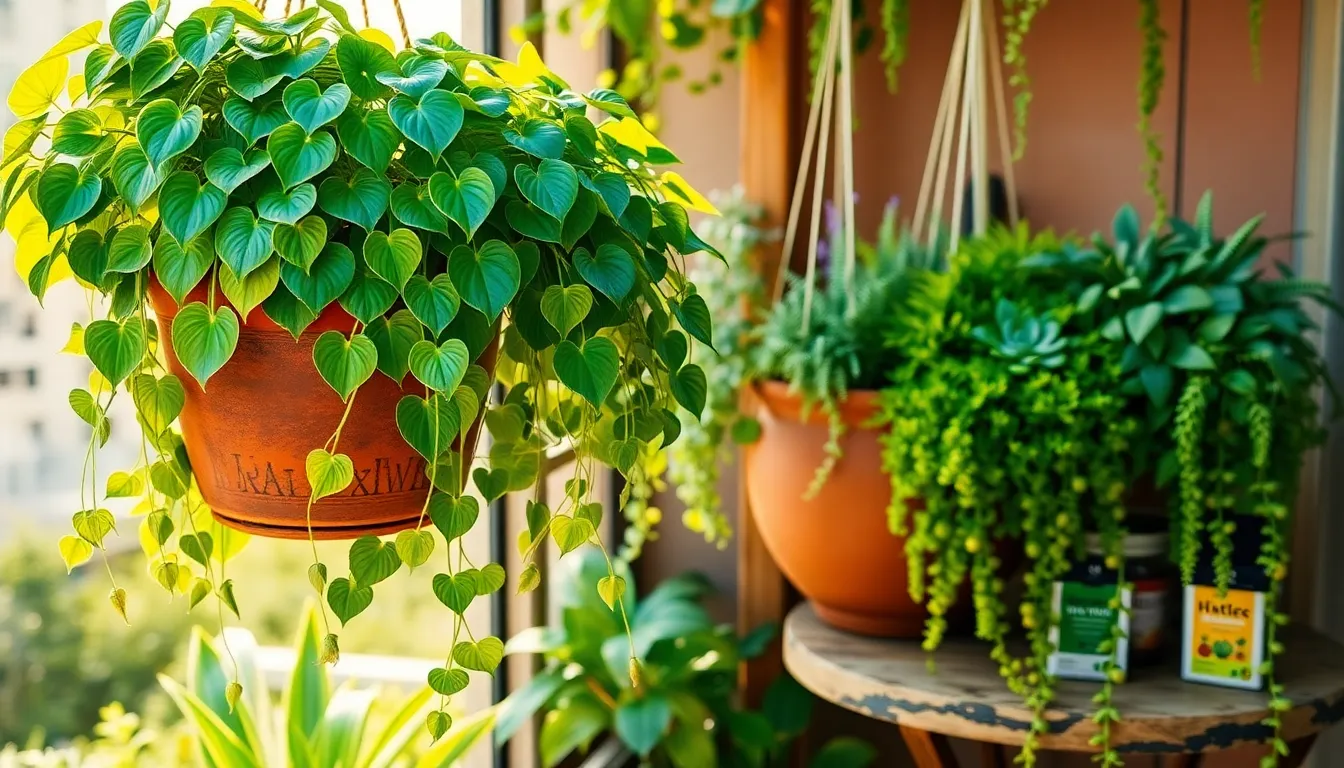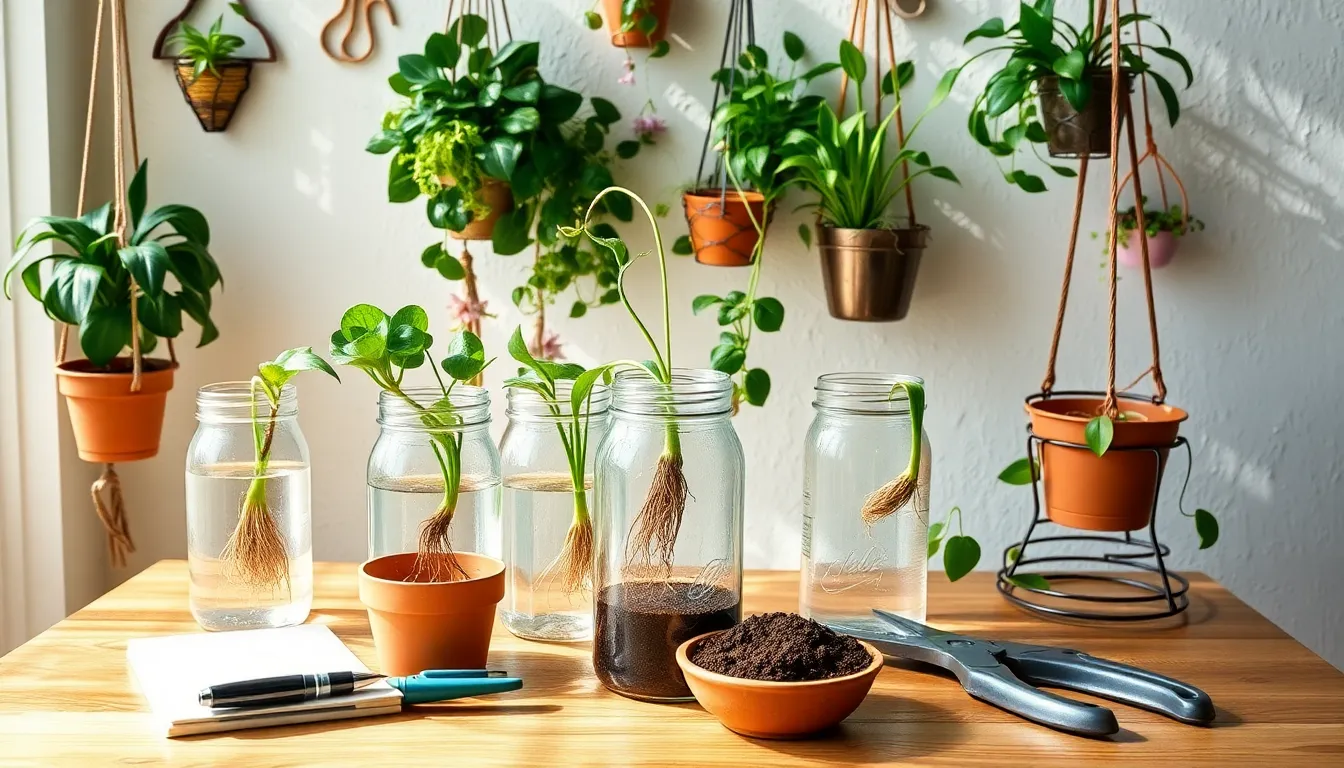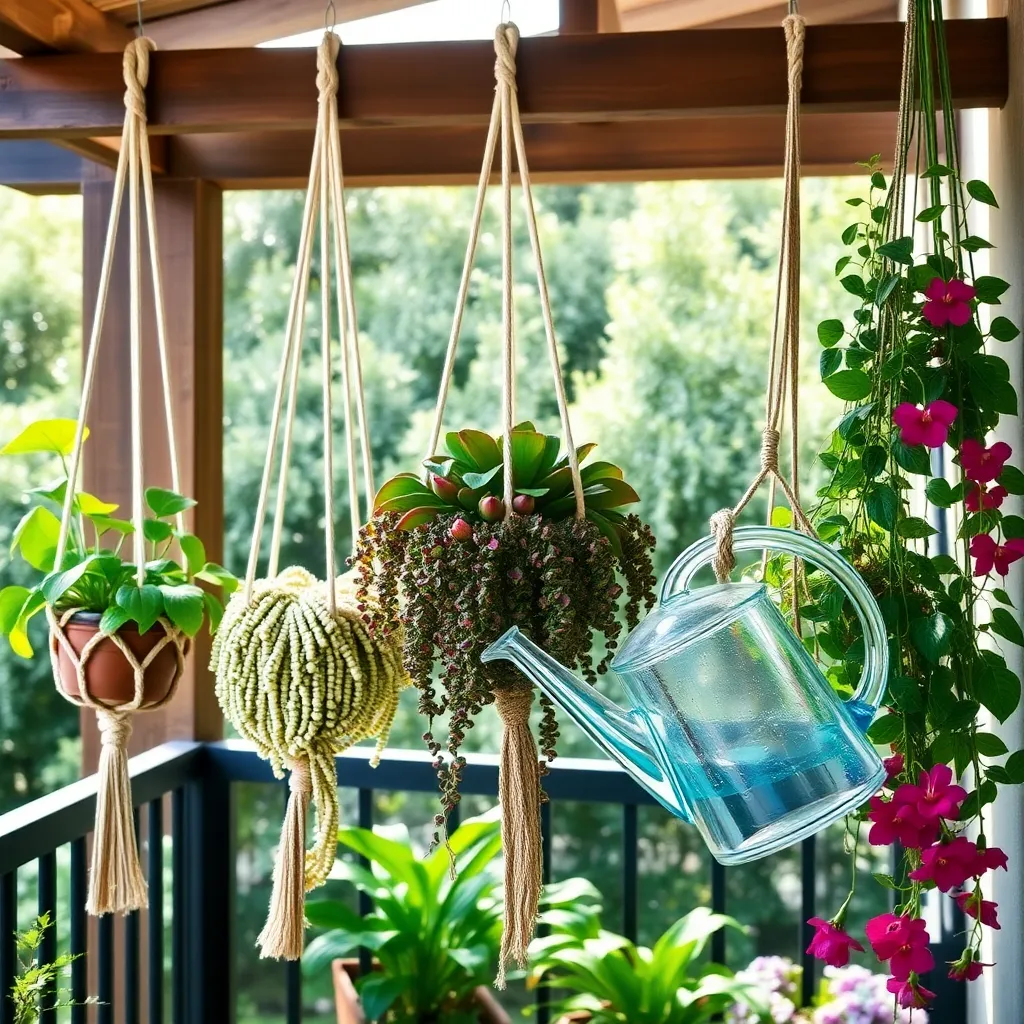Imagine transforming your home into a lush, living tapestry where vibrant greens and cascading tendrils dance in the breeze. Hanging plants offer a delightful way to bring life into small spaces, injecting a sense of tranquility and beauty that’s as refreshing as it is inspiring. For those new to gardening, the prospect might seem daunting, but rest assured, it’s a rewarding journey that promises a bounty of satisfaction. Even seasoned gardeners will find a new depth of creativity and challenge in the art of vertical gardening.
Hanging plants are not just a feast for the eyes; they play a crucial role in improving air quality and boosting your mood. Understanding the unique needs of these aerial beauties is essential for their growth, and that’s precisely what we’ll explore together. This guide will walk you through everything from selecting the right plants and containers to mastering watering techniques and ensuring adequate light. Whether you’re nurturing a single pothos or curating a collection of trailing ivy and ferns, you’ll find actionable tips to elevate your green thumb.
As we delve deeper, you’ll discover how to create stunning displays that suit both indoor and outdoor settings. Learn to pair plants with the perfect environment, and embrace creative arrangements that reflect your personal style. Our aim is to make hanging plant care feel as accessible and enjoyable as a gentle morning stroll in your garden. So, let’s embark on this journey of growth and discover the joys of cultivating hanging plants, one leaf at a time.
Select Suitable Hanging Plant Types
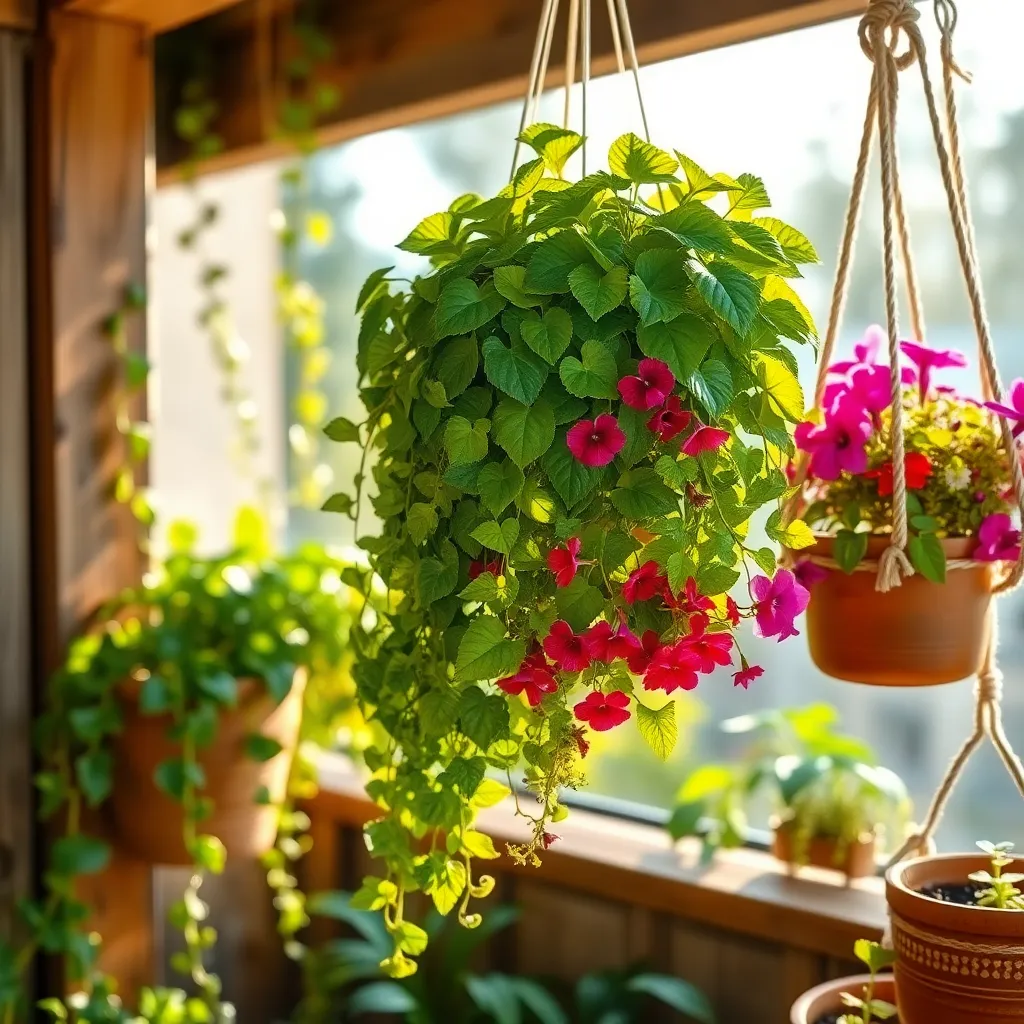
When choosing hanging plants, consider their light requirements and match them to the conditions in your intended space. For example, spider plants are excellent for beginners because they thrive in indirect light and are forgiving if you occasionally forget to water them.
Another great choice is the Boston fern, which prefers a humid environment and indirect sunlight. Make sure to mist the leaves regularly to maintain humidity and keep the soil consistently moist to promote lush growth.
If you’re looking for a pop of color, consider the trailing petunias, which bloom profusely with adequate sunlight. These plants require at least six hours of direct sunlight a day and should be watered when the top inch of soil feels dry to the touch.
For more advanced gardeners, the string of pearls can add a unique texture to your collection. This succulent requires well-draining soil, such as a cactus mix, and should only be watered when the soil is completely dry, as overwatering can lead to root rot.
Choose Appropriate Hanging Containers
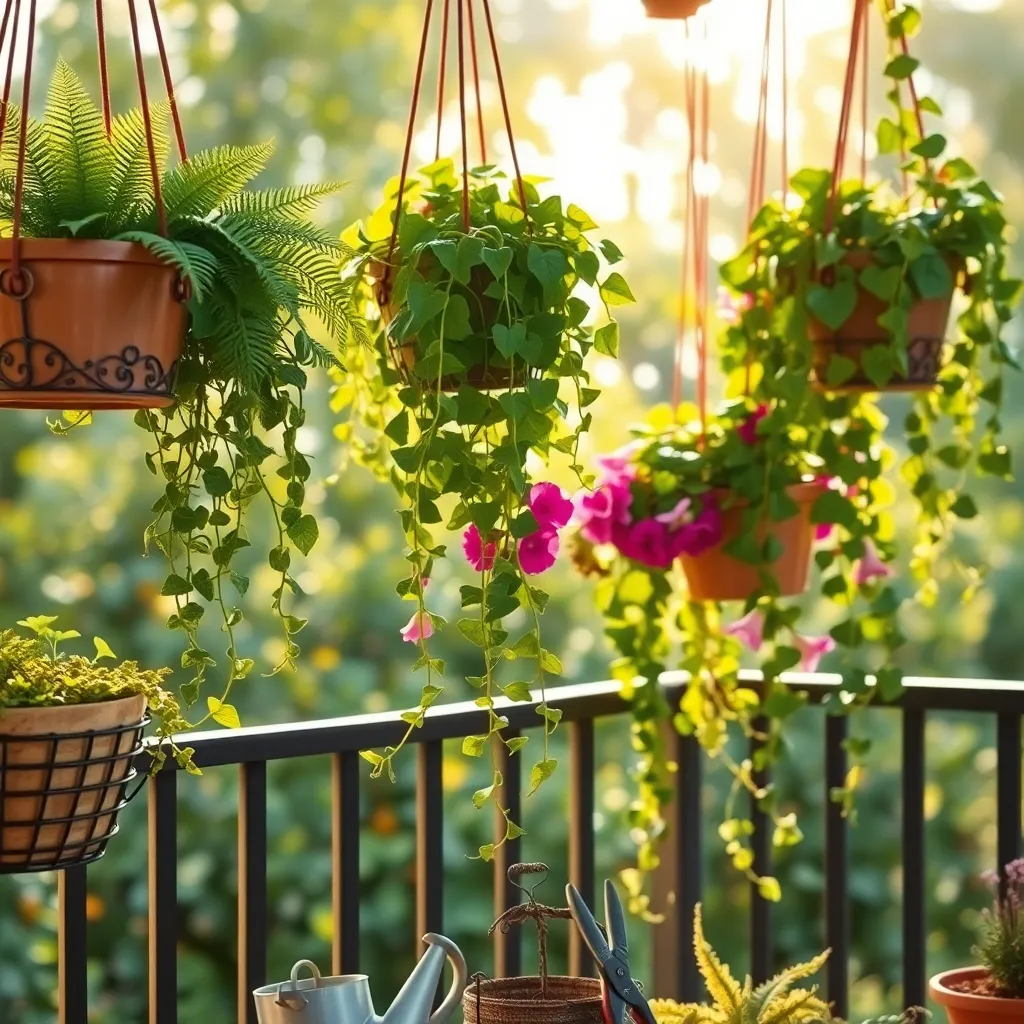
When selecting hanging containers, consider the specific needs of your plants, such as light and water requirements. Choose containers with adequate drainage holes to prevent waterlogging and root rot, which are common issues in hanging plants.
Materials such as plastic, terracotta, or metal can influence plant care, as each affects moisture retention differently. Plastic retains moisture better, making it ideal for plants that prefer consistent watering, while terracotta allows for faster drying, suiting succulents and cacti.
Size is crucial when picking a container, as it determines root space and plant growth. Opt for a container that is slightly larger than the plant’s root ball to give roots room to expand, promoting a healthier plant.
For those looking to add a decorative touch, consider containers with a buildup of moss or coco liners. These not only provide aesthetic appeal but also assist in moisture retention and airflow around roots.
Prepare Lightweight Potting Mix
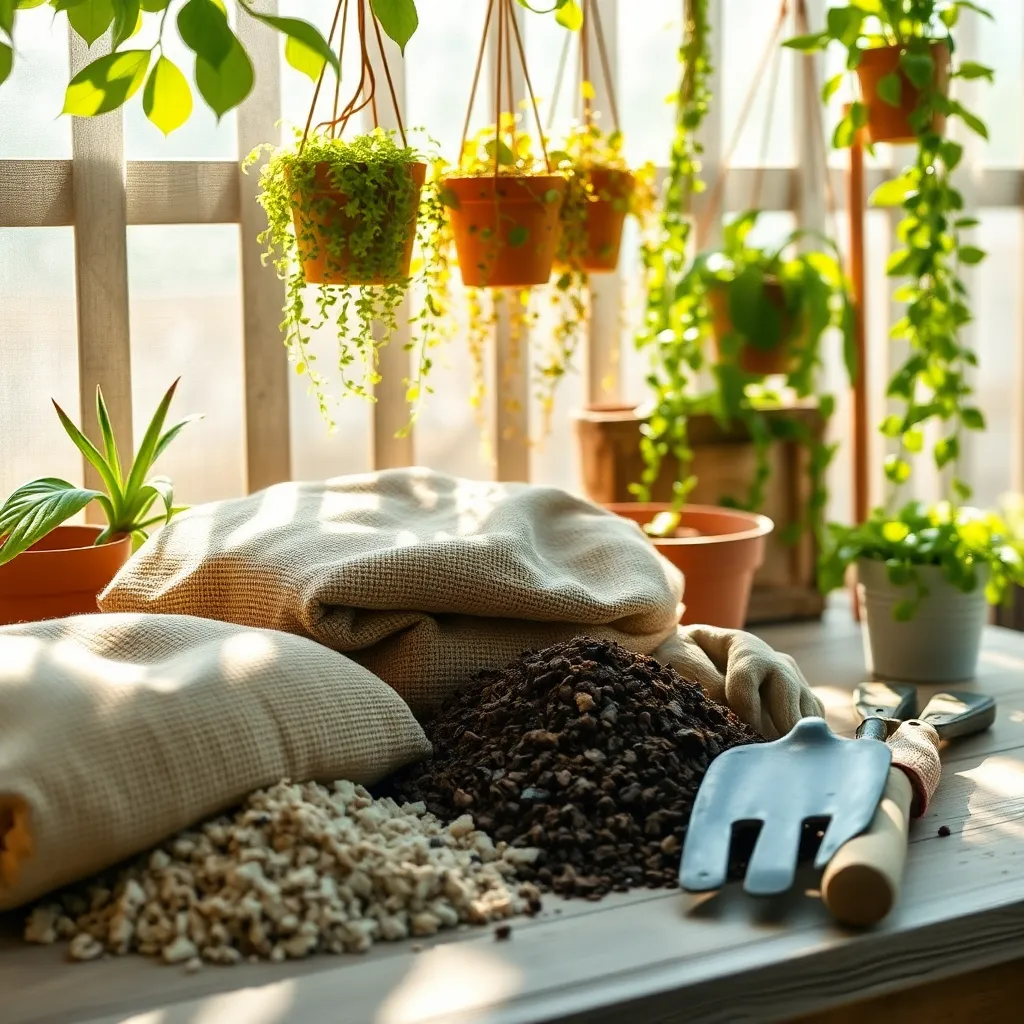
Creating a lightweight potting mix is essential for the health and vigor of hanging plants. A well-drained mix prevents root rot and ensures the plants can thrive without becoming waterlogged.
Begin by combining equal parts of peat moss, perlite, and vermiculite to form the base of your potting mix. This combination provides excellent drainage while retaining enough moisture to keep the plants hydrated.
For added nutrients, mix in a small amount of slow-release fertilizer granules tailored for your specific plant type. This step is especially helpful for beginners who may not yet have a regular fertilizing schedule.
Experienced gardeners might consider adding coconut coir as an alternative to peat moss, which is a more sustainable option. Coconut coir enhances water retention and improves the overall texture of the potting mix.
Ensure Proper Watering Techniques

Proper watering techniques are crucial for the health and vitality of your hanging plants. Since hanging plants are often more exposed to wind and sun, they tend to dry out quicker than ground-planted counterparts.
Consider the plant species when deciding on watering frequency, as different types have varying needs. For instance, succulents and cacti require less water compared to ferns or petunias, which prefer more moisture.
A good rule of thumb is to check the top inch of soil; if it feels dry, it’s time to water. Always ensure the water drains well from the bottom of the pot, preventing root rot caused by stagnant moisture.
Use a watering can with a long spout to reach the soil directly, minimizing water splashing onto the foliage. This method helps to avoid fungal diseases that can develop if leaves stay wet for prolonged periods.
Position for Optimal Sunlight Exposure

When growing hanging plants, finding the right position for optimal sunlight is crucial for their health and growth. Start by observing the natural light patterns in your space, as this will guide you in selecting the perfect spot for your plants.
Many hanging plants thrive in bright, indirect sunlight, which can be found near windows with sheer curtains or in rooms that receive filtered light. For plants that demand more light, such as certain succulents or herbs, placing them near a south-facing window often works best.
Consider rotating your hanging plants every few weeks to ensure that all sides receive equal light exposure, promoting uniform growth. This simple practice can prevent your plants from leaning towards the light source and helps maintain their aesthetic balance.
For those with limited natural light, investing in grow lights can be a game-changer, providing the necessary illumination for your plants to thrive indoors. Choose LED grow lights for energy efficiency and adjust their placement to mimic natural sunlight as closely as possible.
Conclusion: Growing Success with These Plants
As we’ve explored in this beginner’s guide, nurturing hanging plants parallels nurturing relationships: both require understanding, attention, and the right environment to thrive. The key concepts we covered include: the importance of choosing the right “soil,” or foundation, for your relationship; providing consistent “water” through communication; ensuring adequate “light” by maintaining clarity and transparency; the need for routine “pruning,” or resolving conflicts; and allowing room for “growth,” respecting each other’s individuality.
To put these insights into practice, start today by scheduling a heartfelt conversation with your partner to discuss one area where you’d like to grow together. This small step can set the stage for deeper connection and understanding. Remember, successful relationships, like flourishing plants, are nurtured over time with care and dedication.
To keep these valuable tips at your fingertips, save or bookmark this guide now. This way, you can revisit these principles whenever you need a refresher or a boost of inspiration. As you continue on this journey, remember that the seeds of a thriving relationship have already been planted, and with the right nurturing, you can look forward to a future of shared growth and happiness.

